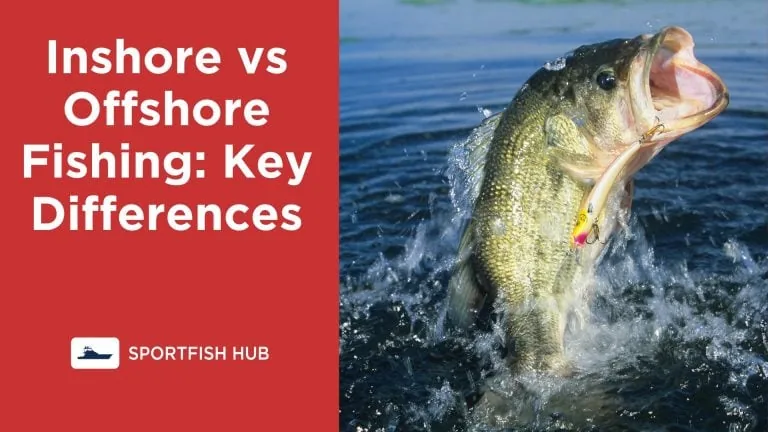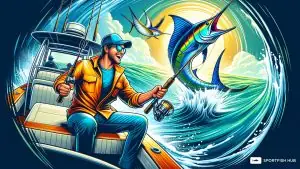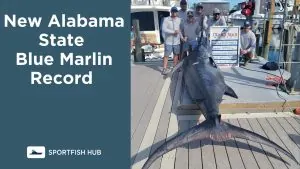Inshore fishing is a fun, accessible way to get out on the water and catch fish without needing a large boat or venturing too far offshore. This beginner’s guide covers everything you need to know to get started with inshore fishing.
What is Inshore Fishing?
Inshore fishing refers to fishing close to shore, usually within a few miles of the coastline. It occurs in relatively shallow waters less than 30 meters deep.
Common inshore fishing locations include:
- Bays
- Flats
- Mangroves
- Estuaries
- Backwaters
- Tidal rivers
- Creeks
- Inlets
- Harbor areas
Inshore anglers typically target smaller species like:
- Redfish
- Snook
- Speckled trout
- Flounder
- Snapper
- Sheepshead
- Crevalle Jack
- Ladyfish
- Croaker
- Spot
- Whiting
Inshore Fishing vs. Offshore Fishing
| Inshore Fishing | Offshore Fishing |
|---|---|
| Within a few miles of shore | Over 20-30 miles offshore |
| Shallow water less than 30m deep | Deep ocean water over 30m deep |
| Calmer water | Open ocean with rougher water |
| Smaller fish species | Larger pelagic fish species |
| Smaller boats and tackle | Larger boats and heavier tackle |
The main differences between inshore and offshore fishing come down to distance from shore, water depth, targeted species, and equipment used. Inshore offers a more accessible experience closer to shore going after smaller inshore fish. Offshore requires bigger boats and gear to go further offshore and catch larger game fish.
Inshore Fishing Gear
Having the right inshore fishing gear makes catching fish much easier. Here’s what you need:
Rod and Reel Size
- Rod: Medium power, 6-7ft spinning rod. A fast or extra fast action works well.
- Reel: Spinning reel with smooth drag in size 2500-4000. Larger sizes hold more line.
- Line: 10-20 lb braided line is ideal for sensitivity and strength. Fluorocarbon leader can also be used.
Terminal Tackle
- Hooks – 1/0 to 3/0 live bait hooks, circle hooks for cut bait
- Sinkers – 1/4 to 1 oz egg, sputnik, or slip sinkers. Heavier for currents.
- Leader – 20-30lb fluorocarbon leader helps bait visibility.
- Swivels – Barrel swivels when using leader.
Lures
- Soft plastic baits – Paddletails, shrimp imitations, jerkbaits
- Hard lures – Poppers, spoons, shallow diving crankbaits
- Jigs – Bucktail, paddle tail jigs bounce off bottom
Bait
- Live – Shrimp, mullet, croaker, menhaden. Use aerated livewell.
- Cut – Squid, mullet, ladyfish. Bring a sharp knife.
Other Gear
- Landing net – Rubber nets better for fish
- Pliers – Hemostats for hook removal
- Fishing gloves – Protects hands from fins/teeth
- Tackle storage – Plano boxes to organize tackle
- Cooler with ice – Keep fish and drinks cold
Best Inshore Fishing Boats
Small, shallow draft boats under 25ft excel for inshore fishing. Popular options include:
- Jon boats
- Bay boats
- Flats boats
- Skiffs
- Canoes/kayaks
Key features for inshore boats:
- Shallow draft to access shallow water
- Poling platform for sight fishing
- Livewell to keep bait alive
- Plenty of rod holders
- Anchoring system – Anchor, pole, or trolling motor
- Leaning post or seats – Comfortable boat control
- Storage – For gear and catches
Tips for Inshore Fishing Success
- Fish early morning and late afternoon when fish are most active
- Target structure like docks, mangroves, oyster beds
- Watch for fish activity like baitfish or birds diving
- Adjust tactics based on conditions and fish behavior
- Vary retrieves until you get bites
- Use live bait for best results
- Be stealthy in shallow clear water
- Check tide and moon phases. Fish feed more on moving water.
- Don’t forget the sunscreen and drinks!
FAQ
What bait is best for inshore fishing?
Live bait like shrimp, crabs, and baitfish work well for inshore fishing. Artificial lures like soft plastics, spoons, and jerkbaits can also be effective.
When is the best time to go inshore fishing?
Early morning and late afternoon are usually the best times for inshore fishing when fish are more active. Tidal movements also impact fish activity.
What rods and reels are best for inshore fishing?
Medium power rods around 7 feet long paired with spinning reels work well for casting and retrieving inshore. Go with higher pound test line like 10-20 lb.
Summary
Inshore fishing is an accessible way to catch a variety of fish species without venturing too far offshore. With the right boat and tackle, you’ll be hooked on the fun and excitement of inshore fishing in no time!













